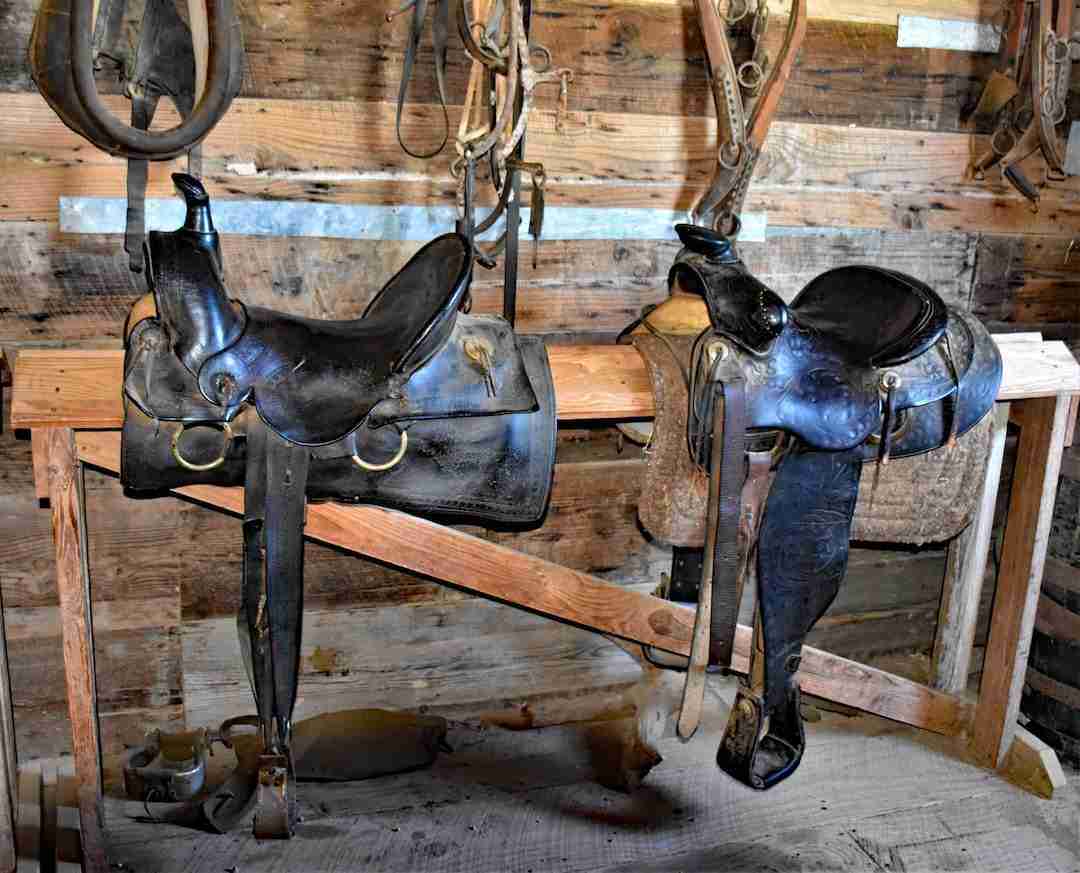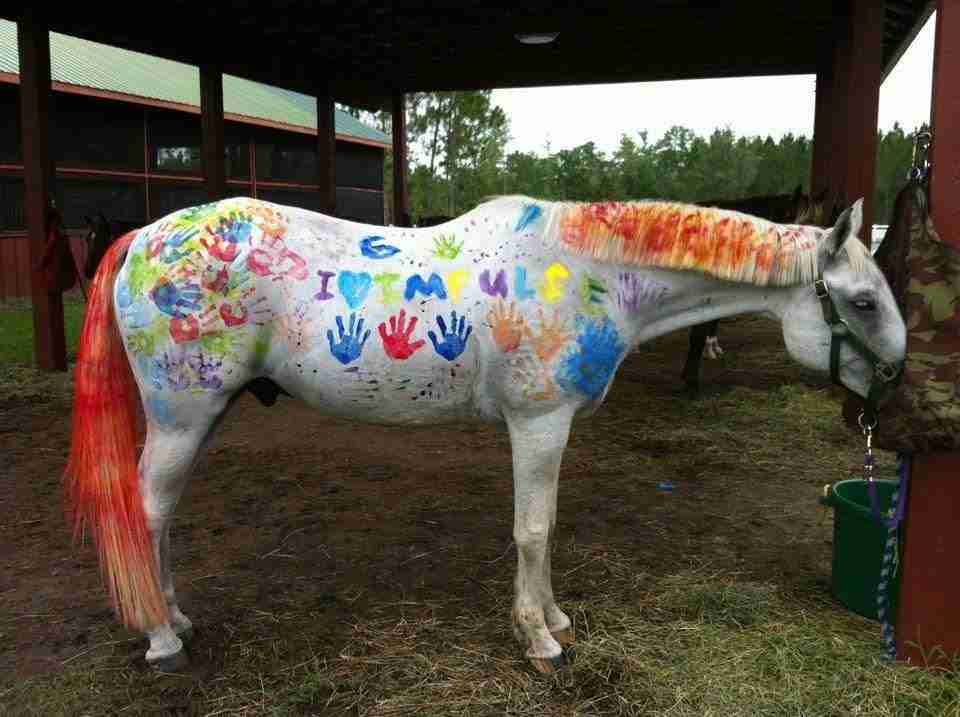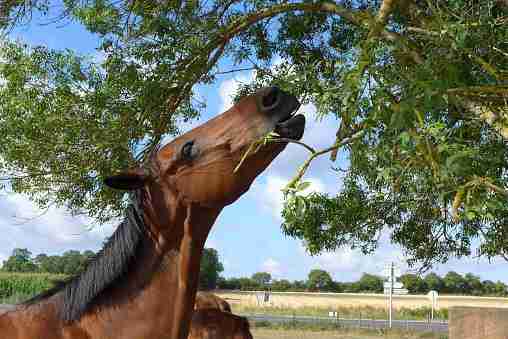If you visit any high-end equestrian facility, you will see that inside the barns, there are cross ties for horses in designated areas. If you are not used to cross-tying your horse, you might wonder what exactly cross ties are and what the benefits of using them are.
Cross Ties For Horses are used to tie horses safely between two walls or posts, keeping them still and calm while being groomed, saddled, or examined. Cross ties generally consist of two anchor straps, ropes, or chains with a quick-release snap on one end that attaches to each side of a horse’s halter.
Cross ties for horses can be dangerous if they are not used to being tied, and horrendous accidents can happen if a horse acts up while in cross ties. Horse riders need to learn how to work with cross ties safely and how to train a horse to be cross tied. This article looks at what cross ties are, the advantages and disadvantages of using them, and how to safely cross-tie a horse.

What Are Horse Cross Ties?
Safely tying a horse up is one of the most important skills to learn as a horseman. There are many instances where you need a horse to stand still, like when you are tacking up or grooming them.
Many equestrians simply tie their horses to a single fixed point using a halter and lead rope. They tie the end of the lead rope to a tie ring using a quick-release knot so that the horse can break away in an emergency.
Cross ties for horses are an alternative to this method.
Cross ties for horses are two straps, ropes, or chains that are attached via a tie ring to two opposite walls or posts 8-12 feet apart. The ends of the cross ties have a quick-release snap that connects to a clip on the horse’s halter.
What Are The Different Types Of Cross Ties For Horses?
There are two main types of Cross ties for horses: standard cross ties and adjustable cross ties.
- Standard cross ties are usually made of rope or chain. The two ties each have a quick-release snap on one end, and the other end attaches to tie rings on opposite walls or posts with a bull snap.
- Adjustable cross ties are almost the same as standard cross ties, but they have a sliding buckle, so the length of the straps can be adjusted. Adjustable cross ties are usually made from nylon, bungee cord, or leather.
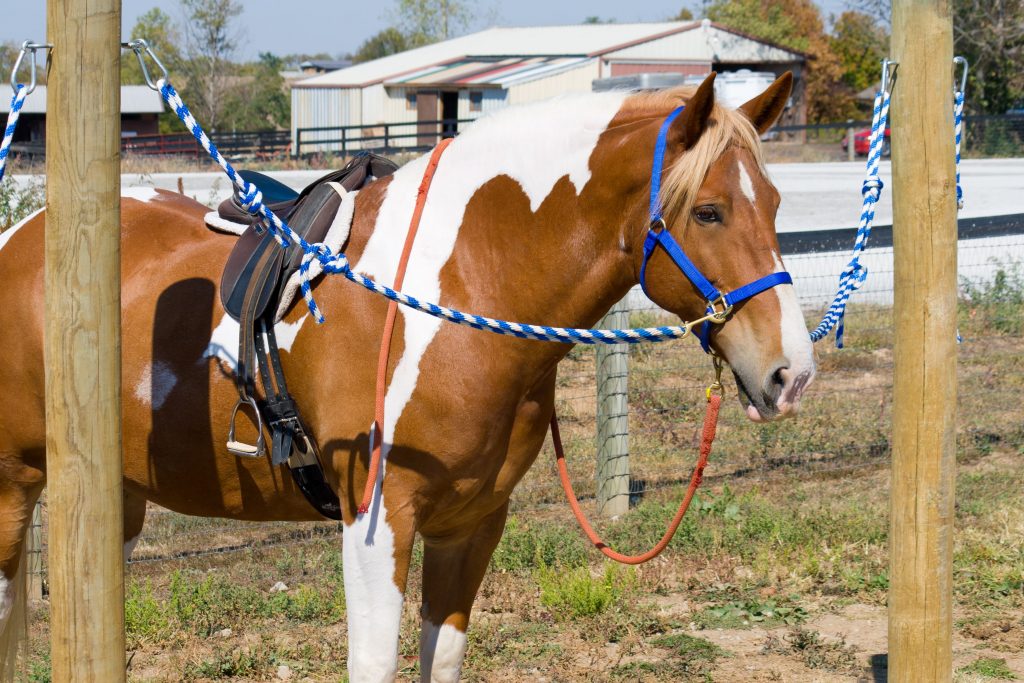
Why Do People Cross Tie Horses?
It is important for horses to stand still while they are being handled. Cross ties for horses are a convenient way to tether a horse while they are being groomed, saddled, or examined.
But what are the advantages of cross ties for horses compared to other standard methods of tying up a horse?
- Cross ties for horses do not allow them to move around as much as with other tying methods. They cannot swing around or turn their heads.
- When a horse is cross-tied, it gives you space to walk around the horse on all sides, making grooming and saddling much easier.
- Cross ties keep a horse centered in a confined space like an aisleway, wash rack, or box area.
- Cross ties are better for young horses that are not completely used to being tied up.
- Cross ties help to keep a horse’s head up and prevent them from getting their head stuck under the chest bar in a trailer. Horses cannot maintain their balance as well when their head is down. Keeping their head up is important for their safety while they are being transported.
- Compared to hard tying a horse, cross tying allows them to break away and get loose if they spook. This prevents injury to the horse, the rider, and the barn.
What Are The Risks Of Cross Ties For Horses?
Cross tying makes it safer and easier to handle horses, but if a horse is not cross tied correctly, or the cross ties are not set up correctly, it can lead to dangerous consequences.
If a horse has a bad experience being cross-tied, it can lead to fear and unwanted behaviors going forwards.
There are countless nightmarish accounts of horses and riders being injured when a cross-tied horse panics and tries to get free.
Horses should never be left unattended when they are cross-tied. If something goes wrong, they can injure themselves badly.
A horse can slip and lose its footing while being cross tied.
How To Set Up Cross Ties For Horses
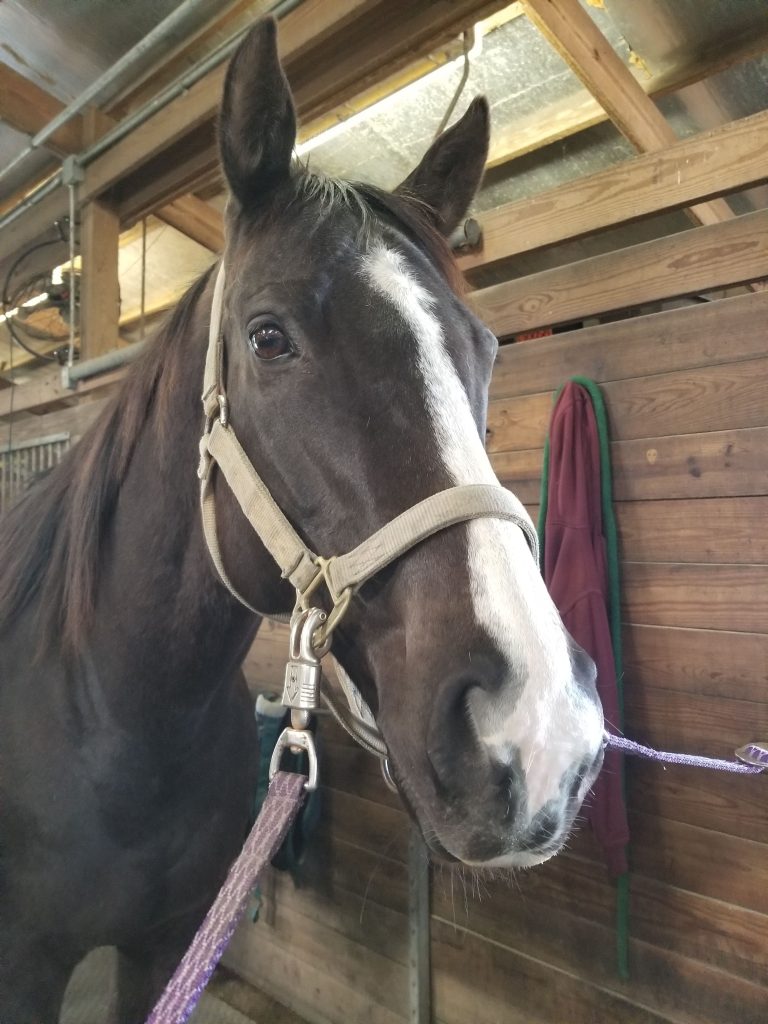
When setting up an area where you can cross ties for horses, it is important to get a few things right, such as:
- The flooring in the cross-tying area
- The distance between the two walls or posts
- The height of the tie rings on the walls or posts
- The length of the cross tie straps
- The quick-release mechanism
The area where you will be cross-tying your horse must have non-slip flooring. Horses can easily slip on concrete and stone surfaces, so rubber mats are essential.
The walls or posts that are used for cross-tying a horse must be a minimum of 8 feet apart, but 10 to 12 feet is preferable. There must be enough space for a person to get out of the horse’s way if it startles.
The tie rings must be mounted to the wall or post at a height that is greater than the horse’s withers. That way, if the horse rears or pulls, the tie rings will not be ripped loose.
The cross tie straps must be the correct length so that the horse cannot turn around or get tangled up in them. To find the right length, attach each strap to its tie ring and bring the two snaps together in the middle. The two straps should overlap about 10 inches.
When the horse is cross-tied, the straps should be long enough that if the horse moves backward, its rear will touch a wall or fence before the straps pull tight. This helps to prevent horses from panicking.
The ends of the cross ties that will attach to a horse’s halter must have quick-release panic snaps. This is a critical safety feature that all cross ties must have.
Other Articles To Read:
How To Safely Cross Tie A Horse
To prevent accidents and bad experiences, it is critical for horse riders to learn how to cross-tie a horse the proper way.
It is also essential for horses to be trained for cross-tying. They should be comfortable being tethered, and they should already be able to be ground tied before you put them in cross ties.
Follow these steps to safely cross tie a horse:
- First, ensure that there are no hazardous objects like shovels, brooms, or barn equipment in the cross tying area.
- Lead the horse into the cross tying area by their lead rope.
- Attach both cross ties to the cheek rings on the horse’s halter.
- Ensure that the horse is nicely centered so that there is no tension on the cross tie straps.
- You can then remove the horse’s lead rope.
How To Train A Horse To Be Cross Tied
The earlier you start training a horse to be cross tied, the easier and safer it is for everyone involved. Horses must learn how to patiently stand when they are cross tied without rearing up.
A horse is only ready for cross tie training if they reliably respond to commands to keep its feet still, move forward and backward, and focus on you.
Follow these steps to cross tie train a horse:
- Start by getting the horse to associate the cross tying area with positive things like grooming and treats. Lead them into the area and command them to stand still while you groom them without cross ties.
- Get another person to hold the horse’s lead rope while you move around the horse’s body. They must get used to standing still even when they are not in the leading position.
- If the horse moves, simply command them to move back into position.
- Once the horse is happy being in the cross tying area, you can tie them up. Attach both cross ties to the cheek rings on the horse’s halter but keep the lead rope attached.
- To get the horse used to the sensation of being tethered and the tension on the cross ties, command the horse to move forwards until the cross ties tighten. Give them a firm “woah” and lots of praise when they stop.
- Next, command the horse to move backward until the cross ties tighten. Say “woah” to stop them and give them lots of praise when they stop.
- Move the horse back to the center of the cross tying area.
- With another person standing in front of the cross tied horse holding the lead rope, move around the horse’s body. If they try to turn their neck to see what you are up to, the person in front of the horse should encourage them to keep facing forwards.
- Once the horse gets more comfortable being cross tied, you can remove the lead rope, and you do not need a person standing in front of the horse.
You will not cross tie train a horse in a single day or even a week! Take training slowly and be patient. Depending on your horse’s temperament, cross tie training can be a quick or a slow process.
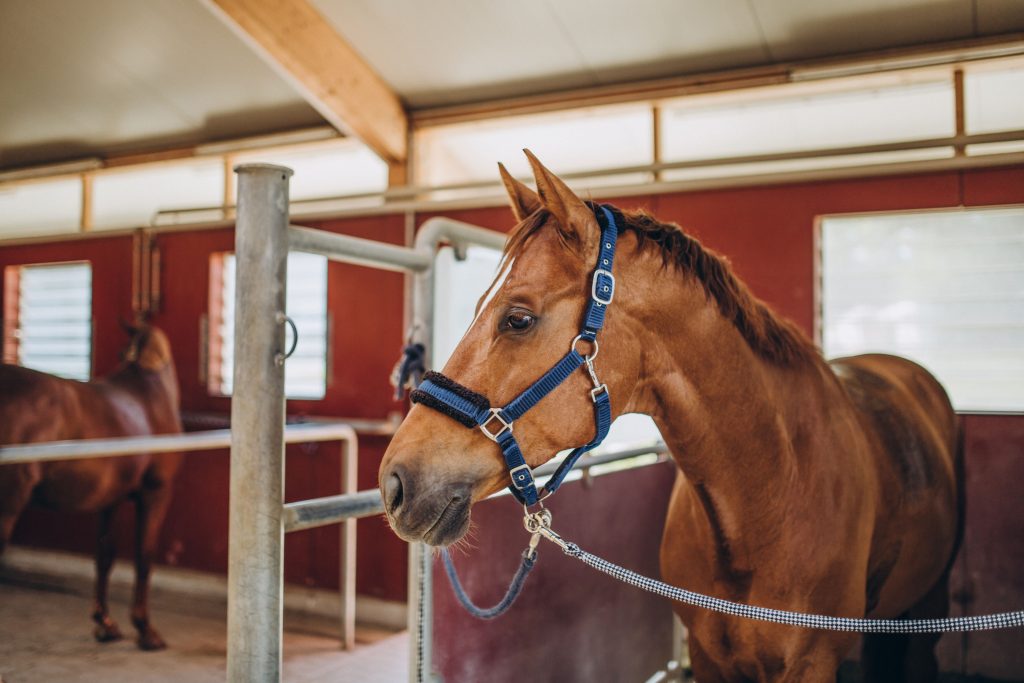
Conclusion
Cross ties are used for tying up a horse between two walls or posts with two lines that attach to the horse’s halter. Cross tying is a great way to keep a horse still and calm while you work with them. It makes grooming, saddling, and farrier work much more convenient.





